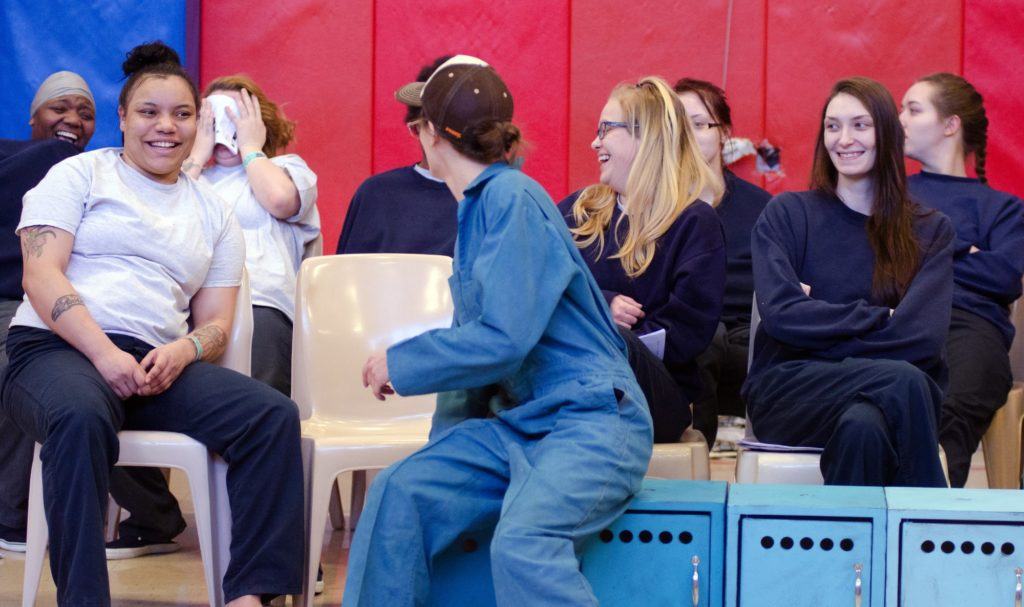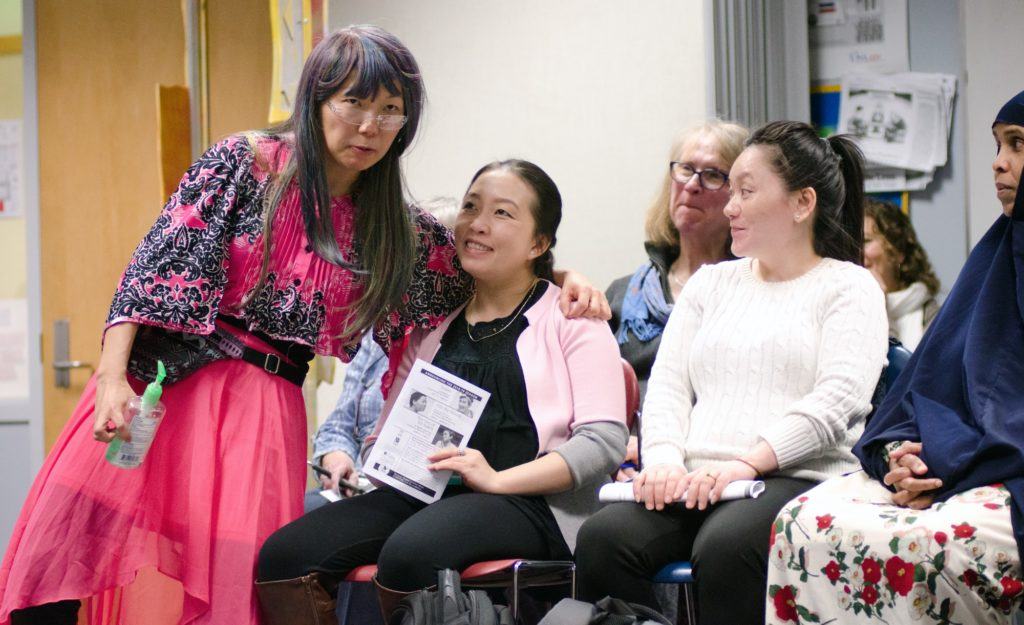Ten Thousand Things Theater

Ten Thousand Things Theater meets people more than halfway; it meets them where they’re at. Since 1991, it’s been meeting people at correctional facilities, rehabilitation centers, domestic abuse shelters, schools for teenage moms, facilities supporting immigrants and refugees, and other non-traditional venues. Its mission: to bring lively, intelligent, professional theater to people with little access to the wealth of the arts – who in turn help artists and traditional audiences re-imagine what theater can be.
“One big a-ha was realizing the difference between day-to-day bookkeeping and actual financial leadership, since I’m responsible for the full spectrum.”
Stephanie Thompson, Managing Director, Ten Thousand Things Theater
Ten Thousand Things’ managing director Stephanie Thompson was drawn to theater for its ability to move audiences. “Theater gives us a place where we can move off a point of stasis – whether it’s a long-held belief or a feeling,” said Stephanie. “Theater is also a place where we come together to share our humanity.”
Taking a broader view of “everyone”

Ten Thousand Things believes that theater is richer when everyone is in the audience. The theater sector in a general is trying to make performances more accessible to younger audiences, those with lower incomes, and non-white audiences – all demographics not currently as represented in performing arts audiences.
For Ten Thousand Things, audience diversity also means a diversity of life experience. “A lot of our audiences are people who you might not think of when you hear ‘everyone’ because they’re hidden from society,” said Stephanie. “To take a show to a correctional facility one day and the next to a space of artists who are differently abled and the next day a paying public audience…that level of diversity calls on all of us, from the cast to the directors, to not make assumptions on who our audience is and what type of work is going to be most relevant and engaging for them.”
From actor to financial leader

Stephanie came to the world of theater as an actor. She’s worn all the hats: performing, teaching, and administrative. At Ten Thousand Things, her focus is on operations and making sure people are getting paid. She knew there was still more to learn as a financial leader and applied for Propel Nonprofits’ Financial Leadership Cohort.
Stephanie was one of 12 participants in Propel’s 2018 Financial Leadership Cohort. This group met monthly for full-day training sessions and covered everything from the technical aspects of how to create a budget to more adaptive strategies like using financial trends analyses to make decisions. “The combination of training plus examples from others in the room really gave me a sense of where we were at, which helped me to prioritize where we wanted to focus resources,” said Stephanie.
Shared financial leadership is effective financial leadership
Like a lot of small nonprofits, Ten Thousand Things is a lean team with only five staff members. They don’t have a physical office space, they rehearse in a community space at a local church, and perform on-site at organizations throughout the community. With a relatively small staff and budget Stephanie had been giving the board a line-by-line budget report. However, since the cohort session where everyone brought a board member along to clarify roles and responsibilities, she’s been working closely with the finance committee to rework the financial reports for the board so they can focus questions at a higher level. “Our artistic director also joined me at one of the sessions, which was so helpful to bring the learning into the core of our organization and not just have it as professional development for me,” said Stephanie.
The Financial Leadership Cohort also shifted the way Stephanie thought about overhead and infrastructure investments. “I remember the exact slide showing the typical pie chart for infrastructure expenses and discussing how to change that image to a graphic that represents core infrastructure necessary to supporting programs,” said Stephanie. “The idea that to grow programming you have to grow from investing in internal infrastructure support was a big shift in my perspective.”
In the end, Stephanie walked away with a clearer sense of her role, and also how to separate technical problems from those that might require adaptive change. “It sounds silly to say this now, but it wasn’t clear to me when I started the training: one big a-ha was realizing the difference between day-to-day bookkeeping and actual financial leadership, since I’m responsible for the full spectrum.”
To learn more about Ten Thousand Things Theater and to get tickets for one of their upcoming shows, visit their website: https://tenthousandthings.org/.
Top photo: Paula Keller
